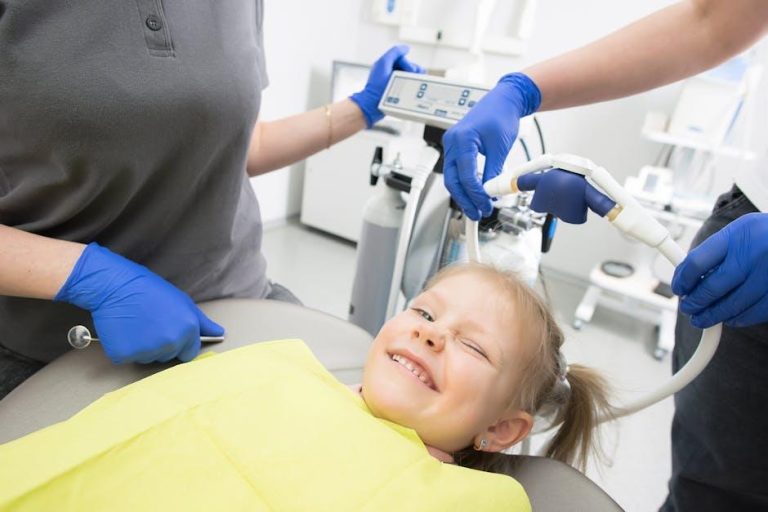1 in 3 Kids Has Dental Problems, Poll Finds – U.S. News & World Report
According to a recent poll highlighted by U.S. News & World Report, dental problems affect approximately one in three children in the United States. This alarming statistic shines a light on the growing concern about pediatric oral health and emphasizes the urgent need for awareness and preventive care.
Understanding the Scope: What Dental Problems Do Kids Face?
When discussing dental problems in children, it’s important to understand the common issues that affect their smiles. These problems can range from minor cavities to more serious conditions that impact overall health.
- Tooth Decay (Cavities): The most common dental problem, often caused by poor oral hygiene and excessive sugary foods.
- Gum Disease (Gingivitis): Early gum disease manifests as redness, swelling, and bleeding gums, which if untreated, can progress further.
- Tooth Sensitivity: Pain from hot, cold, or sweet foods due to enamel wear or decay.
- Tooth Injuries: Accidents or sports injuries leading to chipped or knocked-out teeth.
- Malocclusion: Misaligned teeth or jaws, often requiring orthodontic treatment.
Key Findings from the U.S. Poll on Kids’ Dental Health
The poll conducted nationally surveyed thousands of parents and guardians across diverse demographics. Here are some of the standout findings:
| Statistic | Details |
|---|---|
| 1 in 3 | Kids in the U.S. have experienced at least one dental problem. |
| 60% | Parents report difficulty accessing timely dental care due to cost or availability. |
| 45% | Cases of untreated tooth decay are more prevalent in low-income families. |
| 30% | Children with dental anxiety refuse or delay dental visits. |
Why Are Dental Problems So Common Among Children?
Several factors contribute to the high prevalence of dental issues in children:
- Poor Oral Hygiene Habits: Children may struggle to brush and floss effectively without adult supervision.
- Diet: Frequent consumption of sugary snacks and beverages increases the risk of cavities.
- Lack of Access to Dental Care: Socioeconomic barriers limit preventive and restorative treatment opportunities.
- Insufficient Education: Both parents and children might underestimate the importance of early dental care.
- Dental Anxiety: Fear of dental procedures causes avoidance, worsening untreated problems.
Benefits of Early and Regular Dental Care for Children
Establishing good dental habits and routine dental visits early can prevent many common dental problems. The benefits include:
- Prevention of Tooth Decay and Gum Disease: Early care helps maintain healthy teeth and gums.
- Early Detection: Dentists can identify issues before they become serious or painful.
- Building Positive Dental Experiences: Reduces anxiety associated with dental visits over time.
- Promotes Overall Health: Good oral health is linked to better nutrition, speech development, and self-esteem.
Practical Tips for Preventing Dental Problems in Kids
Parents and caregivers can take proactive measures to protect children’s oral health:
- Start Early: Begin brushing your child’s teeth as soon as the first tooth appears using a soft-bristle toothbrush and fluoride toothpaste.
- Supervise Brushing: Help kids brush twice daily until they develop the dexterity to do it effectively.
- Limit Sugary Foods and Drinks: Encourage healthier alternatives and reduce sticky sweets that cause decay.
- Schedule Regular Checkups: Take children to the dentist every six months or as recommended.
- Discuss Dental Fear Openly: Prepare children for visits by talking about what to expect and rewarding positive behavior.
- Use Sealants and Fluoride Treatments: Ask your dentist about preventive treatments to protect teeth.
Case Study: How Early Intervention Changed One Child’s Oral Health
Consider the story of 7-year-old Emma, whose parents discovered cavities during a routine dental visit. Early intervention with fillings and guidance on brushing habits prevented further decay. Emma’s parents adopted better dietary habits, leading to improved dental health without pain or emergency visits.
“Seeing the dentist regularly made all the difference. Emma now enjoys brushing and is no longer scared.” – Mrs. Johnson, Emma’s mother.
First-Hand Experience: Pediatric Dentist’s Advice
Dr. Sarah Langley, a pediatric dentist in New York, shares:
“Dental problems in children are largely preventable. It’s important for parents to start dental visits early and maintain consistent oral hygiene routines. Positive reinforcement and educating kids about oral health can make dental visits less intimidating and support lifelong healthy habits.”
Conclusion: Securing Kids’ Smiles for a Healthier Future
The revelation that 1 in 3 kids suffers dental problems nationwide calls for immediate attention from parents, educators, and healthcare providers. By understanding the common dental issues children face and adopting preventive strategies, families can significantly reduce the risk of oral health problems.
Remember, early care is key. Regular dental checkups, healthy eating, and daily oral hygiene will help children build the foundation for strong, bright smiles. Let’s work together to tackle pediatric dental problems head-on and ensure happier, healthier lives for the next generation.


